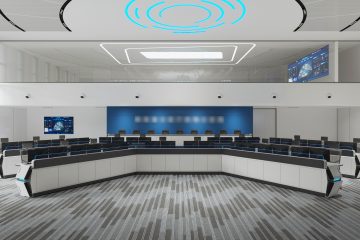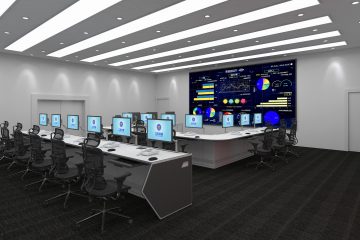The benefits of an improved control room design
A well-designed control room can affect the productivity of employees, thus influencing the return on investment. In this case, the return on investment is measured by the safety and efficiency of operators. When technology is used to help operators achieve success, it is more likely to avoid and manage unforeseeable situations and catastrophic events.
If the control room design follows ISO standards and incorporates HFE procedures, capital expenditure can be saved up to 15%. We are talking about reducing engineering time, project schedule duration, and even supporting any necessary rework. Net benefits include improved productivity, employee retention and motivation, increased customer “support”, improved communication workflow and operations, and management supervision capabilities.
A control room that meets ergonomic design is also considered an employee benefit that attracts all-star professionals, which can directly affect the company’s return on investment. In addition, it saves the time for the human resources department to train new employees, as turnover can be reduced by 4.9% to 9.0% (according to Humantech’s data).
Few people would oppose investing in high-tech ergonomic hardware for control room systems, because the human factor is the ultimate quality determinant. These professionals are engaged in highly cognitive tasks and must make instant decisions with multiple impacts that directly affect financial returns. The most advanced room can increase the recovery time of operators, thereby improving productivity response in the shortest possible time.
Improving Existing Control Rooms
The first step in improving control room conditions is to promote a control room audit. This is a simple process that can transform existing control rooms into the latest facilities for focus, achievement, and organic collaboration. The practical fixes listed below can help any 24/7 critical mission environment achieve the highest level.
Lighting
Glare, non-dimmable fixtures, or a lack of proper lighting can lead to misinformation or fatigue, with dire consequences.
Acoustics
Noise can be a distraction or even disruptive, increasing response time.
Workflow
Obstacles, inefficient passageways, limited access to meeting rooms and lounges, proximity to interference factors – all of these factors can affect efficiency and safety.
Screen Size
Small and outdated screens often do not allow for the display of all modern data. Old screens also do not provide proper screen backlighting, increasing eye strain.
Man-machine Interface
The line of sight and reach must be optimized to minimize critical task response time in the event of an abnormality. Basic considerations for comfort can vary greatly when different operators use the same equipment in multiple shifts.
Workstation Configuration
Improperly arranged seating configurations or poorly configured operator adjacency can hinder smooth collaboration and optimal communication.
Adjustable Workstations and Seats
Furniture with limited height adjustment and mobility can lead to fatigue and even chronic health issues over time.
Conclusion
Following best ISO 11064 practices can guide control room design decisions. With the help of an experienced ergonomic professional company specializing in control room architecture, you can not only build a safer control room environment but also continuously improve your bottom line over time.


